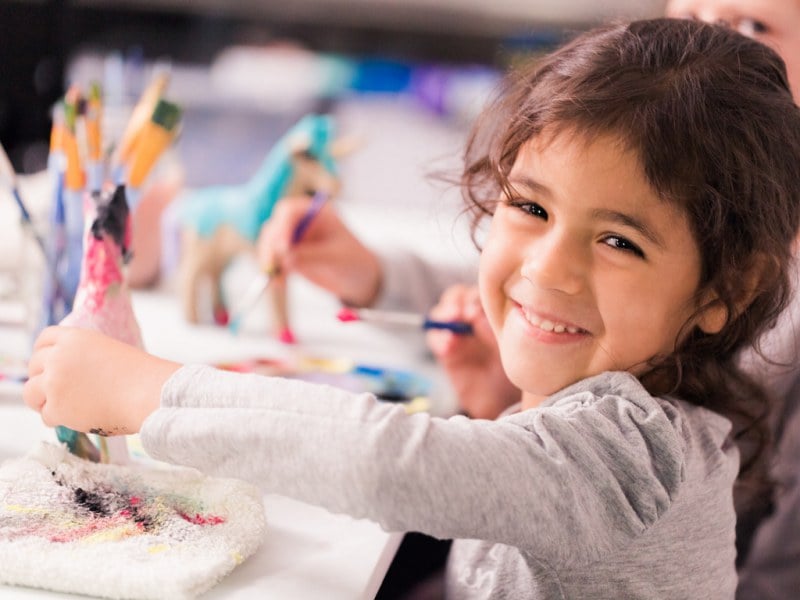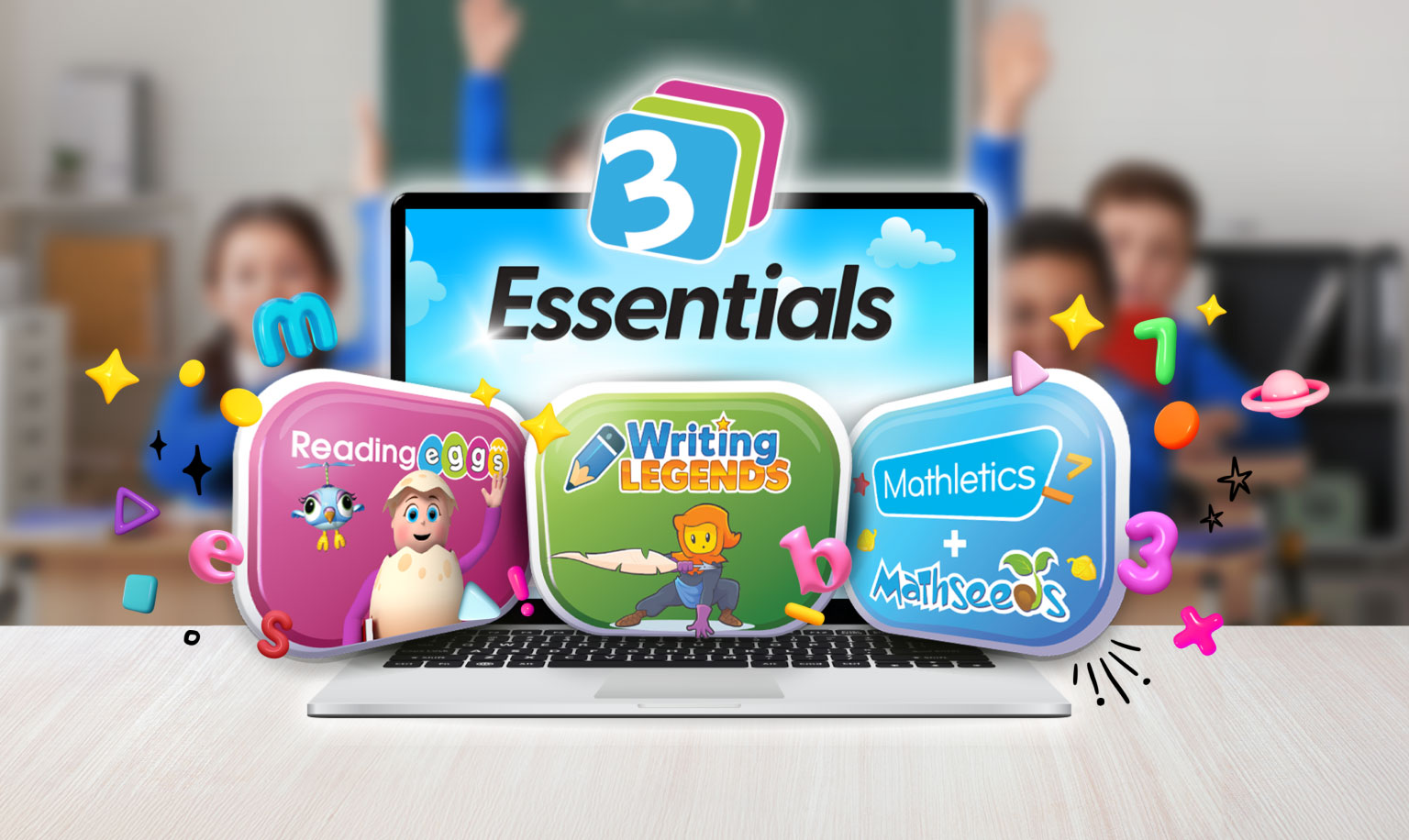
Give your kids’ math skills a boost with these hands-on, at-home activities.
You won’t need math teaching expertise, or handmade resources either. All these learning experiences can easily become part of the activities you and your kids already do at home!
Cooking by numbers
Whipping up a meal in the kitchen will allow your kids to test their math knowledge with authentic (and edible) results. Here are a few ideas:
- Cook to a recipe to teach your child about units of measurement.
- Have your child divide food into equal portions to serve the whole family.
- Adjust a recipe for more or fewer people to teach them about multiplication or ratio.
- Cut soft dough into different shapes with a plastic knife (cookies are great for this).
- Create patterns with pizza toppings or sprinkles.
- Create a shopping list, subtracting the items you already have on the shelf.
- Add up the numbers of knives and forks needed to set the table.
Teacher tips
Once they’ve had the opportunity to get hands on, consolidate your kids’ knowledge with a challenge question or two that gets them to think in more abstract terms. For example:
- If we had six people instead of three, how many pieces would you cut it into?
- If my pizza pattern looked like this [draw it], what do you think the next topping would be to complete the pattern?
- If we had a hungry guest who wanted a second helping, how much do you think we’d need?
And yes, there will be mess. But remember – the best learning doesn’t always happen at a clean desk!
Board and card games
Traditional games can be great tools for math learning. Sophisticated board games like Monopoly and Chess can hone high-level skills, but you can also do a lot with a pair of dice or a pack of cards. Here are some examples suited to early learners:
War
- Divide a pack of cards between two.
- Each player takes an unseen card from their stack and places it face up.
- Whoever has the highest number gets to keep both cards.
- Repeat until one player has one the entire deck.
Go fish
- Each player gets five cards, and the rest are laid face down in a pool.
- Players then take turns asking each other for cards of a particular number (“do you have any threes?”) in the hope of obtaining a pair.
- If a player gets a pair of cards, they put them face down on the table.
- If a player asks someone for a card they don’t have, they’re told to “go fish” and must pick a random card from the pool.
- Once all cards have been paired, the player with the most pairs wins.
President
- Deal a whole deck of cards evenly between at least three people.
- The nominated “president” (or winner of the previous round) puts down 1–4 cards of the same rank to start (e.g. three 4s).
- The next players have to play an equivalent number of cards of the same value (or higher) or pass.
- When no one has another card to play, the last person to put one down restarts the round with a new set of cards.
- The first person to put down all their cards and be left with an empty hand wins and becomes the “president”.
Pig
- Players take turns rolling a dice, adding up their results. They can keep rolling and racking up points for as long as they like, with the first person to reach 100 being the winner.
- But there’s a catch! If they roll a 1, they score 0 points on that turn.
- So each turn, players have a choice. Do they take their points while they still have them, or keep rolling at the risk of losing them all?
Organizing spaces around the home
Getting your kids to organize their diabolical bedrooms will achieve more than just a visible floor. You’ll also help them develop:
- pattern awareness: ordering things in a way that looks consistent and appealing
- understandings of set and classification: separating tops from bottoms, jackets from shirts etc.
- spatial awareness: folding and packing items so that they fit into a space.
It doesn’t have to be a whole bedroom, either. It might be a single drawer or the kitchen bench that steadily collects keys, coffee cups, and unopened mail.
Whatever you choose, treat it as a problem-solving activity. Ask your child to come up with a system that they can explain to you afterwards, or even have them diagram it on a piece of paper.
Craft with shapes and patterns
Getting hands on with different shapes and patterns paves the way for geometric and spatial awareness. You don’t need much: just scissors, glue, and some colorful craft materials (card, paper, cellophane, or even alfoil).
Have your kids find different items around the house that they can use to trace shapes onto these sheets. For example, a cup or lid could be used to trace circles.
Kids can then cut these shapes out and glue them together to create new shapes, patterns, or perhaps even recognizable figures. Challenge them to create a house, a car, or even their pets.
Shopping
Shopping is perfect for developing arithmetic because it’s an authentic math activity kids can understand. So, get them to help you with the list and come along to pack the trolley!
Start by setting a budget and listing some non-negotiable items (hint: look up the prices online ahead of time). Kids are then tasked with making the best possible use of the remaining money. Will they be able to afford the ingredients for their favorite dinner and some lollies at the checkout?
When it’s time to hand over the cash, let your kids count it out and check the change. They won’t just walk away with math skills – they’ll also have a better idea of how much things cost.
Counting
Any counting activity will sharpen the number sense of early learners. Here are a few ideas:
- Count things around the house (e.g. the number of steps, taps, or doors).
- Create a workout routine by counting jumping jacks or skipping.
- Choreograph a dance.
- Count spare change into $1 lots and swap it for bills or dollar coins.
As they become more proficient, early learners can start counting in groups of five or ten. This process is known as ‘skip-counting’, and it’s exactly what they’ll need when they move onto more complex arithmetic at school.
Scavenger hunts
Send kids on a quest to find mathematical symbols and items around the home. A newspaper is a good place to start. For example, they could find:
- a table
- a percentage
- a decimal
- a time
- a fraction (including fractions expressed in words).
A scavenger hunt lets kids see mathematical concepts used in authentic concepts. They’ll come to understand that the things they learn in math class aren’t just confined to worksheets – they’re a real part of the world in which we live.
Timetabling
If you’ve got older kids with a busy schedule outside of school time, task them with creating a timetable. It’s a practical way to develop understandings of time and division.
Start by having kids draw up the table, which is a mathematical activity in and of itself. How many days need to be timetabled, and how many hours need to be accounted for? Use their school timetable as an example if they get stuck.
Next, fill in all the spaces. Start with existing commitments, but don’t forget time for reading, family, and relaxing. Maybe there’s not as much TV time available as they thought!
Want to do more to help your kids with math at home?
Turn screen time into math time with one of our online mathematics programs. They’re loved by more than three million students worldwide, and they get the seal of approval from math teachers, too.












